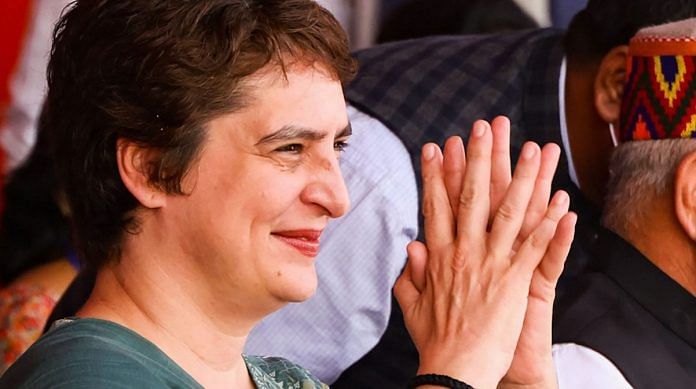Declaring Asha Singh, mother of the 2017 Unnao rape survivor, as a Congress candidate in the upcoming Uttar Pradesh elections, is certainly a symbolic move. Whether it will translate into an effective result is not exactly a minor question. Whether it is Prime Minister Narendra Modi’s initial high-profile campaign when he came to helm the government with ‘beti padhao, beti bachao’, or any smaller initiatives, the woman’s question, at first sight, seems to be non-partisan. Another way to put it would be that women are effectively and routinely deployed as symbols across the political divide. It is far harder to assess if it translates into effective political power for women. Women and political power are set in a paradoxical bind in Indian democracy that goes to the heart of political leadership.
Women leaders in India and the world
Even young undergraduates reading Indian politics with me, in distant Cambridge, have been quick to notice that Indian democracy strikingly has had a slew of women leaders. A few years ago, when Hilary Clinton failed to win the Democratic Party’s presidential nomination, it showed the stark distinction between women’s leadership in India and America or — as the cliché goes — between the world’s largest and most powerful democracies respectively.
It is indeed a fact that women have held and continue to hold major offices of political power and routinely lead big and small parties alike in India — from Indira Gandhi to Mamata Banerjee and Mayawati to J. Jayalalithaa. Yet, and this is the key paradox noted not least by my undergraduates, it is hard to escape the stark reality of gender disparity (and not merely inequality) in India. The gender disparity is widely documented in statistics and everyday experience, as this disparity takes diverse forms of violence from female infanticide that has given a skewed sex ratio to rape and poor health indices, to say nothing of inequality of work opportunity, mobility, security and all manner of other challenges.
Also read: Congress fields Unnao rape survivor’s mother in UP polls, women form 40% of 1st party list
Why women emerge as leaders
Given all the odds stacked against her, what then explains the now-assured arrival of women political leaders? One obvious answer would be that women derive their leadership credentials as members of already influential families. From the local zila parishad level to the office of the prime minister, women have emerged as political leaders if their families are already invested and secured in politics.
But a more speculative and tentative answer is the opposite. Politics offers the best exit path from India’s deeply entrenched patriarchal society. If not to exit it entirely, then, at the very least, to step aside and preferably to sit on top of this iniquitous social structure. True individual autonomy is possible for women especially if they emerge as political leaders, and you don’t have to look further than Mayawati, Jayalalithaa, or Mamata. To be sure, political office will not insulate even the most powerful female leader against misogyny. By the same token, there seems to be no direct or deep relationship between greater gender equity and political leadership.
In short, while Indira Gandhi, no doubt, was one of India’s most powerful prime ministers despite some targeted schemes and efforts, it is nevertheless hard to argue — much less remember her government — as one that made life significantly better for women.
Also read: Only one woman in marriage bill panel deplorable. Don’t repeat history of underrepresentation
Parties and women as a vote bank?
It would, though, be a mistake to surmise that since the woman’s question is pervasive, it is free of partisanship otherwise marked by either generalised neglect or pure symbolics. In India’s hyper-political society, why should the woman’s question remain non-partisan?
If anything, over the last decade, distinct stances across the political spectrum have become increasingly evident. The Congress — as with the latest declaration — seems to be primarily focussed on violence against women and women’s representation in legislature. This is evident from its leadership’s personalised support to rape victims like 2012 Delhi gangrape victim and her family, and more recently, the Unnao rape survivor’s family. Meanwhile, powerful regional leaders, notably Nitish Kumar and Mamata Banerjee, are doing better with their women voters in comparison to the male vote. The relatively new entrant of the Aam Aadmi Party seems to be po-faced at best and at worst, overwhelmingly male — at least in terms of women’s representation in its sole cabinet in Delhi.
The ruling Bharatiya Janata Party has arguably made the most audacious move. In criminalising triple talaq and making the Uniform Civil Code a central promissory issue, the BJP seeks to flatten or indeed ostensibly make and treat women as a uniform entity, at least before the law. It is audacious because it seeks to render minority identity as sectional or segregative in contrast to the woman as a universal and aggregative identity. This is to say nothing of polarisation, communalism, and majoritarianism that all feed directly into this viscerally divisive debate. The BJP has, in short, clearly staked the woman’s question in precisely this aggressive context of competing identities.
The upcoming long season of mini and mega elections, starting with UP and extending till the general elections in 2024, will test each party’s imagination and tactics on the women’s vote. What is clear is that there is a distinct gap and disconnect between female political leadership and effective gender justice in India. The party that can close that gap will succeed in not just creating, but also capturing that all-too elusive thing called the women’s vote bank.
Shruti Kapila teaches modern Indian history and global political thought at the University of Cambridge. She tweets @shrutikapila. Views are personal.
(Edited by Humra Laeeq)






